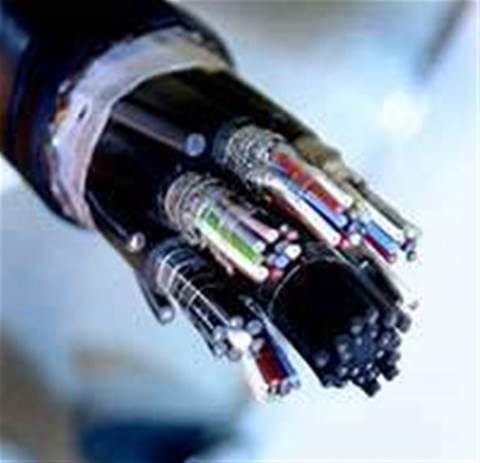Several news outlets have reported multiple undersea cable breaks around Southeast Asia occurring on 12 August 2009.
Due to the depths of the water and the fact that - according to various reports and quoted cable operators - multiple cables - have been affected by undersea seismic activity.
Cable damage due to fishing activity tends to be in shallow water, and usually affects one cable at a time.
Yesterday's disruptions, then, are puzzling. The only Asia region earthquakes logged in this timeframe by the US Geological Survey - usually a reliable source - were located far from the reported breaks.
Assuming the breaks did occur at the reported locations, then, several explanations are possible.
One is that the survey log missed one or more underwater earthquakes responsible for the breaks.
The measurement process is not flawless, especially underwater, and the risk of errors would seem to be higher during bad weather - which Typhoon Morakot clearly represents.
The Geological Survey did log a magnitude 5.6 quake around Mindanao, Philippines at 4am local time; if a similar quake a day earlier went unrecorded, this would explain some of the reported outages.
Another possibility is that the outages actually stem from terrestrial hardware or fibre network failures; these are less common but not unheard of.
Deliberate sabotage of either the undersea cables or the cable terminating stations on shore is another explanation.
This is in theory a big risk, as cable stations are not always well secured and it is impossible to safeguard thousands of kilometres of cable deep underwater.
But again, this is unlikely, and - as far as the public knows - this has not happened yet outside of imaginative novels.
Hopefully these issues will resolve themselves over the next few days. Given that there is no single authority managing or monitoring the world's undersea cable networks, uncertainty is inevitable, and it takes time to learn the hard facts.
We would note, though, that the real story here may be how much progress Asia's international network connectivity has made in just the last few years.
With the installation of the Transpacific Express, the Asia America Gateway, several smaller intra-Asia projects and cables linking Europe and Asia through India and the Middle East, the region's cable systems are now much more meshed and resilient, and less prone to catastrophic failures.
With progress comes higher expectations, though, so we look forward to learning from this recent outage how to improve performance going forward; after all, undersea cable networks play central, underappreciated roles in global commerce.
Author: Matt Walker, principal analyst at Ovum







.png&h=142&w=230&c=1&s=1)




.jpg&w=100&c=1&s=0)
_(8).jpg&w=100&c=1&s=0)









